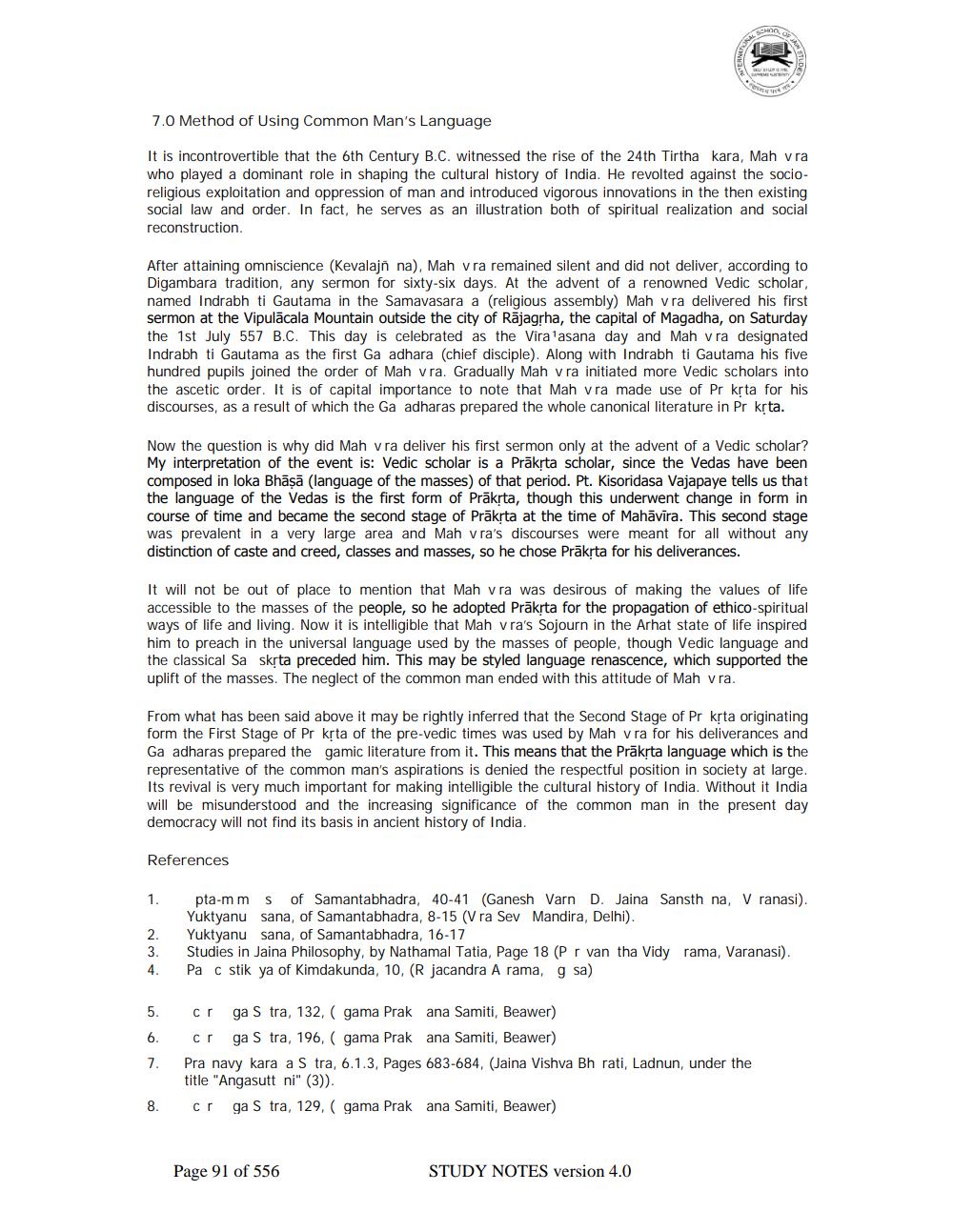________________
7.0 Method of Using Common Man's Language
It is incontrovertible that the 6th Century B.C. witnessed the rise of the 24th Tirtha kara, Mah vra who played a dominant role in shaping the cultural history of India. He revolted against the socioreligious exploitation and oppression of man and introduced vigorous innovations in the then existing social law and order. In fact, he serves as an illustration both of spiritual realization and social reconstruction.
After attaining omniscience (Kevalajn na), Mah vra remained silent and did not deliver, according to Digambara tradition, any sermon for sixty-six days. At the advent of a renowned Vedic scholar, named Indrabh ti Gautama in the Samavasara a (religious assembly) Mah vra delivered his first sermon at the Vipulācala Mountain outside the city of Rājagrha, the capital of Magadha, on Saturday the 1st July 557 B.C. This day is celebrated as the Vira'asana day and Mah v ra designated Indrabh ti Gautama as the first Ga adhara (chief disciple). Along with Indrabh ti Gautama his five hundred pupils joined the order of Mah vra. Gradually Mah vra initiated more Vedic scholars into the ascetic order. It is of capital importance to note that Mah vra made use of Pr krta for his discourses, as a result of which the Ga adharas prepared the whole canonical literature in Pr krta.
Now the question is why did Mah vra deliver his first sermon only at the advent of a Vedic scholar? My interpretation of the event is: Vedic scholar is a Prākrta scholar, since the Vedas have been composed in loka Bhāsā (language of the masses) of that period. Pt. Kisoridasa Vajapaye tells us that the language of the Vedas is the first form of Prākta, though this underwent change in form in course of time and became the second stage of Prākta at the time of Mahāvīra. This second stage was prevalent in a very large area and Mah vra's discourses were meant for all without any distinction of caste and creed, classes and masses, so he chose Prākta for his deliverances.
It will not be out of place to mention that Mah vra was desirous of making the values of life accessible to the masses of the people, so he adopted Prākta for the propagation of ethico-spiritual ways of life and living. Now it is intelligible that Mah vra's Sojourn in the Arhat state of life inspired him to preach in the universal language used by the masses of people, though Vedic language and the classical Sa skrta preceded him. This may be styled language renascence, which supported the uplift of the masses. The neglect of the common man ended with this attitude of Mah vra.
From what has been said above it may be rightly inferred that the Second Stage of Pr krta originating form the First Stage of Pr krta of the pre-vedic times was used by Mah vra for his deliverances and Ga adharas prepared the gamic literature from it. This means that the Prākta language which is the representative of the common man's aspirations is denied the respectful position in society at large. Its revival is very much important for making intelligible the cultural history of India. Without it India will be misunderstood and the increasing significance of the common man in the present day democracy will not find its basis in ancient history of India.
References
1.
pta-mms of Samantabhadra, 40-41 (Ganesh Varn D. Jaina Sansth na, V ranasi). Yuktyanu sana, of Samantabhadra, 8-15 (Vra Sev Mandira, Delhi). Yuktyanu sana, of Samantabhadra, 16-17 Studies in Jaina Philosophy, by Nathamal Tatia, Page 18 (P r van tha Vidyrama, Varanasi). Pa C stik ya of Kimdakunda, 10, (R jacandra A rama, g sa)
6.
or ga s tra, 132, ( gama Prak ana Samiti, Beawer) cr ga s tra, 196, ( gama Prakana Samiti, Beawer) Pra navy kara a S tra, 6.1.3, Pages 683-684, (Jaina Vishva Bh rati, Ladnun, under the title "Angasutt ni" (3)). cr ga s tra, 129, ( gama Prakana Samiti, Beawer)
8.
Page 91 of 556
STUDY NOTES version 4.0




